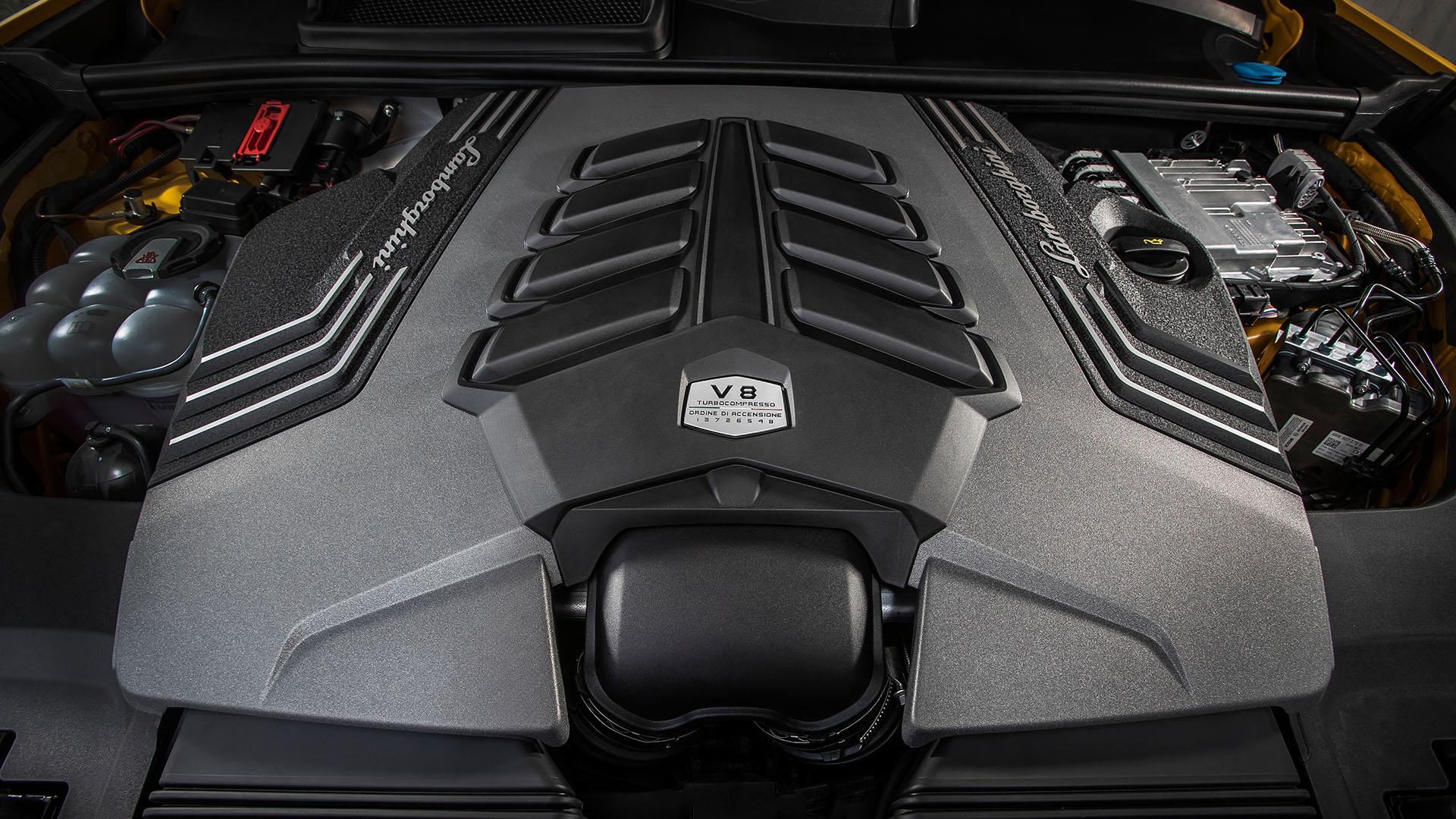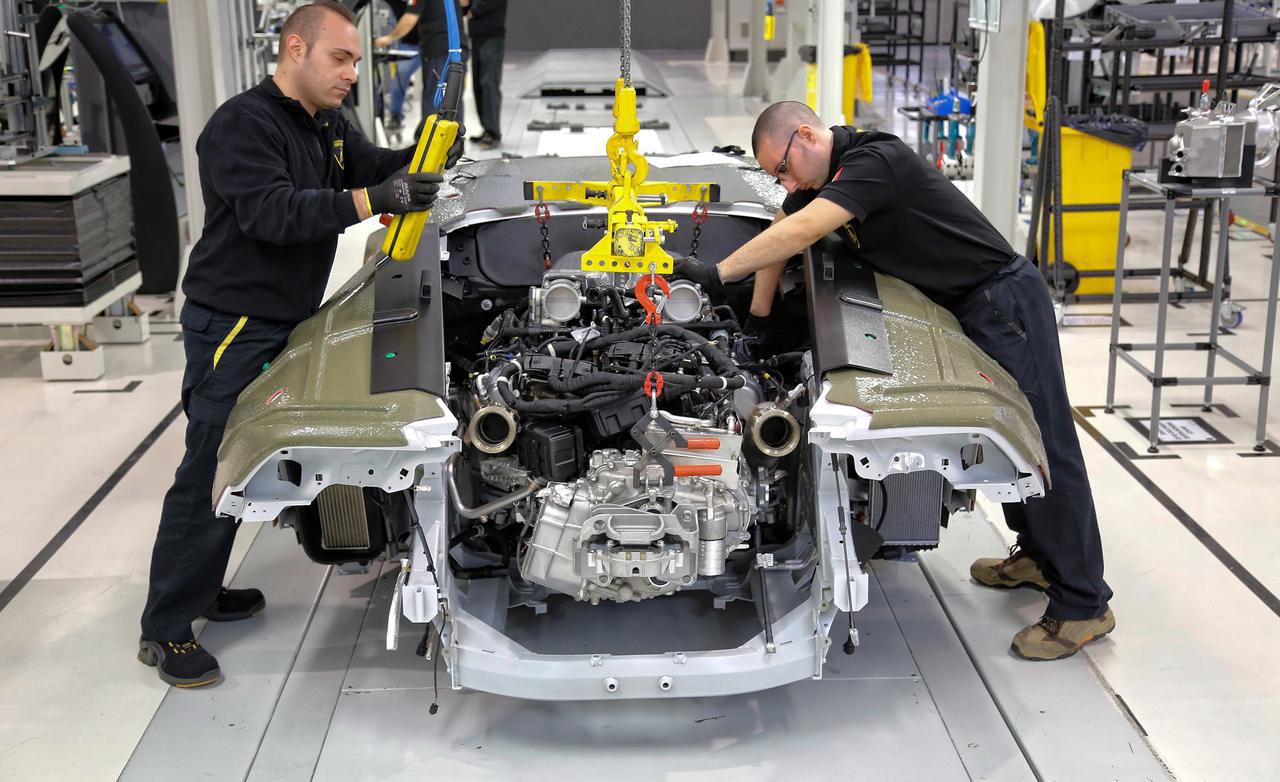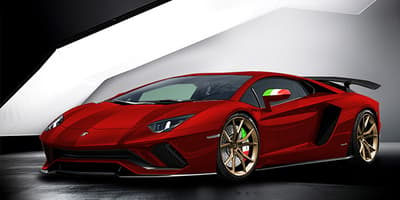When diving into the captivating world of car engines, two powerhouses stand out for their historical significance and engineering feats: the V8 and V12. Each has its unique charm and set of characteristics, and for the automotive enthusiast, understanding these engines is akin to an art historian appreciating a masterpiece.
Historical Background
The V8 engine had its inception in the early 20th century. Cadillac, in 1914, introduced the first mass-produced V8 engine. This powerhouse quickly became synonymous with American automaking, symbolizing raw power and performance.
The V12, on the other hand, is a European original with its roots in the aviation and racing industries. Debuted in the 1920s, it was manufacturers like Packard, Lincoln, and Rolls-Royce who embraced the design, realizing its incredible smoothness and potential for high power.
While the V8 was gaining traction in passenger cars and trucks across America, the V12 was being fit into luxury cars, race cars, and even aircraft due to its performance characteristics.
Basic Design and Configuration
The engine’s configuration, especially the “V” design, plays a crucial role in defining its overall performance, size, and functionality. The term “V” denotes the unique arrangement of the cylinders. When viewed from the end, the cylinders’ layout roughly resembles the letter V, with two banks of cylinders angled away from one another.
The V Formation Explained: Why the V Shape?
The primary reason for adopting the “V” configuration is a blend of efficiency and compactness. Engines with a straight or inline configuration are elongated and can be challenging to fit into many modern car designs, especially as vehicles aim to be sleeker and more aerodynamic. In contrast, the “V” configuration reduces the engine’s length significantly. By placing cylinders in two banks angled to each other, manufacturers can fit more cylinders into a smaller space without sacrificing the size or volume of individual cylinders.
The angle between the two banks of cylinders in a V-configured engine can vary based on design goals. This angle affects various factors, including engine balance, size, and the complexity of the valve and intake manifold designs. Engine designers tweak this angle to optimize performance, reduce vibration, and fit specific vehicle design parameters.
The Number of Cylinders: 8 versus 12 and What it Means
The cylinder count in an engine is akin to the number of musicians in an orchestra: more can lead to a richer, more harmonious performance. Engines with more cylinders can generally produce more power strokes in a single revolution, leading to a smoother power delivery. This is why, typically, a V12 will run smoother than a V8. With every revolution of the engine, a V12 has more mini-explosions (power strokes) happening, ensuring that power delivery remains nearly constant, which leads to smoother acceleration and less perceivable lag.
However, increasing the number of cylinders doesn’t just enhance smoothness; it can also increase power and torque. By having more cylinders, the engine can displace a larger volume of air and fuel in one cycle, leading to more potent combustion and, consequently, more power. But, with the addition of more cylinders comes added complexity, weight, and potential maintenance challenges.
V8 Engines: Overview and Features

At the heart of many iconic vehicles, the V8 engine stands as a symbol of both raw power and engineering prowess. Its unique blend of performance, size, and sound has made it a favorite among automotive enthusiasts for over a century. To understand the V8’s appeal, one must delve deeper into its intricacies and features.
The Anatomy of a V8
The V8 engine, as its name suggests, consists of eight cylinders arranged in a V-shaped configuration, with four cylinders on each bank. The two banks of cylinders are usually set at a 90-degree angle to each other, although this can vary based on design nuances. The V8’s relatively compact design, especially compared to straight or inline engines, has been one of its most notable advantages, allowing it to be fitted into a diverse range of vehicles, from muscle cars to trucks.
Sound and Vibration
One unmistakable characteristic of the V8 is its distinctive rumble. This sound, often associated with power and performance, stems from the engine’s firing sequence and its cylinder arrangement. Additionally, the V8 design offers a good balance, resulting in reduced vibrations. This balance, combined with the right engineering, ensures that the V8 not only sounds good but also feels smooth during operation.
Power and Torque
The V8’s broad power band is one of its standout features. Thanks to its configuration, a V8 can deliver impressive torque at low RPMs, ensuring powerful acceleration right off the line. As the RPMs rise, the V8 continues to deliver, ensuring robust performance across a wide range.
Pros:
- Compact Design: Despite its power, the V8’s design allows it to be relatively compact, making it suitable for various vehicles.
- Wide Power Band: The V8’s power delivery across a broad range of RPMs ensures consistent performance, whether cruising down the highway or accelerating from a stop.
- Simplicity in Manufacturing: With fewer parts than engines with more cylinders, the V8 can be simpler to produce, translating to cost benefits.
- Versatility: The V8 finds its place in a range of vehicles, from heavy-duty trucks needing torque to sports cars craving horsepower.
Cons:
- Smoothness: While the V8 is balanced, it can’t quite match the buttery smoothness of engines with more cylinders, like the V12.
- Fuel Efficiency: Historically, V8 engines, especially older models or those without modern fuel-saving technologies, may consume more fuel compared to smaller or more advanced engines.
V12 Engines: Overview and Features
![]()
The V12 engine, often regarded as the pinnacle of automotive engineering, exudes luxury, power, and unparalleled smoothness. Reserved for the world’s most exquisite and high-performance vehicles, the V12 stands as a testament to the extent of human ingenuity in the realm of automotive design. Delving into its depth, it becomes evident why this engine remains the choice for those seeking the epitome of vehicular excellence.
The Structure of the V12
The V12 is, at its core, a marvel of balance and symmetry. Comprising twelve cylinders arranged in two banks set in a V-configuration, each bank hosts six cylinders. The angle between these banks can vary, but often it’s designed for optimal balance and minimized vibration. This intricate arrangement, while complex, ensures a frequency of firing pulses that offers an exceptionally smooth power delivery.
Refined Power and Serene Operation
The symphony of a V12 at full throttle is a thing of beauty. Unlike other configurations that may produce a raw roar, the V12 sings with a harmonious and refined note, a testament to its balance and even firing order. The sheer number of power strokes per revolution in a V12 engine minimizes gaps in power delivery, reducing vibrations and providing an almost turbine-like smoothness.
Performance Dynamics
When it comes to sheer power and acceleration, the V12 is second to none. With more cylinders contributing to combustion, the engine can generate significant power and torque, especially at higher RPMs. This ensures that vehicles equipped with a V12 can offer both brisk acceleration and high top speeds, making them favorites in the realm of supercars and luxury grand tourers.
Pros:
- Smoothness: The primary allure of the V12 is its unparalleled smooth operation. The frequency of firing pulses ensures there’s always a power stroke in progress, leading to minimal vibration and optimal power delivery.
- Performance: With twelve cylinders at its disposal, the V12 can produce staggering amounts of power and torque, suitable for the world’s fastest and most luxurious vehicles.
- Status Symbol: A V12 under the hood is often seen as a mark of prestige. It speaks of luxury, power, and an uncompromising pursuit of excellence.
- Sound: The harmonious roar of a V12 is distinct and often considered more refined compared to other engine configurations.
Cons:
- Size and Weight: The V12 is undeniably bulkier than its counterparts, which can influence the overall weight and balance of the vehicle.
- Complexity: With a higher number of moving parts, the V12 engine is intricate, which can lead to higher manufacturing, maintenance, and repair costs.
- Fuel Consumption: Given its size and power, the V12 can be thirstier than smaller engines, especially when pushed to its limits.
Performance Comparisons
In the world of high-performance vehicles, the debate between the prowess of V8 and V12 engines is as fervent as ever. Both configurations offer a unique set of performance traits, making them suitable for various driving scenarios and preferences. When assessing performance, it’s essential to consider several metrics, including horsepower, torque, acceleration, and engine response across the RPM range.
![]()
Horsepower and Torque
- V8 Engines: Modern V8 engines can produce anywhere from 300 to over 700 horsepower, depending on their size, tuning, and technological additions. The torque produced by these engines is often substantial, especially in the low to mid-RPM range, which provides robust off-the-line acceleration. This makes V8s ideal for applications that require immediate power, like drag racing or heavy-duty towing.
- V12 Engines: V12s, with their additional cylinders, usually sit on the higher end of the power spectrum. These engines can churn out anywhere from 500 to well over 1,000 horsepower in hypercars and specially-tuned vehicles. Thanks to the even firing order and additional cylinders, torque delivery in V12s is smooth and consistent, often producing peak torque across a broader RPM range.
Acceleration and Engine Response
- V8 Engines: V8s, especially those in performance-oriented vehicles, can achieve 0-60 mph times in the 3-5 second range, with supercars and tuned versions breaking below the 3-second barrier. The immediate torque delivery in V8s ensures rapid response to throttle inputs, making for exhilarating starts and overtakes.
- V12 Engines: V12-powered supercars are among the fastest vehicles in the world. Many achieve 0-60 mph times well below 3 seconds. The broad power band of a V12 ensures power is available across a wide RPM range. This means whether you’re cruising at low speeds or flooring the accelerator, the engine’s response is immediate and smooth.
At Various RPMs
- V8 Engines: V8s are known for their low-end grunt. They tend to produce peak torque at lower RPMs, making them feel especially lively at the start. As the revs climb, the power continues to surge, but some V8s might not rev as high as some of their V12 counterparts.
- V12 Engines: V12s shine across the entire RPM range. Their design ensures that power delivery remains consistent, even at higher RPMs. This continuous surge of power gives drivers the sensation of limitless acceleration, especially in high-performance settings.
On the Racetrack
When on the racetrack, many other factors come into play, such as vehicle weight, aerodynamics, and chassis design. However, if we focus solely on engine performance:
- V8 Engines: Cars powered by V8 engines are often agile, thanks to their comparatively compact size and weight. Their immediate torque delivery can be a boon on tracks with lots of short straights and tight corners.
- V12 Engines: V12-powered cars, with their smooth power delivery, excel on high-speed tracks with long straights. The engine’s ability to maintain power at high RPMs ensures that speed doesn’t taper off as quickly as the vehicle reaches its limits.
Fuel Efficiency and Emissions
Fuel efficiency and emissions are paramount considerations in today’s automotive landscape, as environmental concerns, economic considerations, and regulatory measures shape the trajectory of engine design and application. Both V8 and V12 engines, being larger in displacement and power, face scrutiny in these areas. Here’s an in-depth look at how they compare in terms of fuel efficiency and emissions.
![]()
Fuel Consumption Dynamics
The basics of fuel consumption revolve around engine displacement, tuning, and load. Larger engines, with more cylinders, inherently consume more fuel as they have a larger volume in which combustion takes place.
- V8 Engines: Traditionally, V8s, especially those designed for performance or heavy load-bearing tasks, weren’t particularly known for their fuel efficiency. However, with advancements in technology, including cylinder deactivation, direct fuel injection, and advanced turbocharging, newer V8s can achieve surprisingly good mileage figures under certain conditions, especially on highways or when cruising.
- V12 Engines: V12 engines, with their higher cylinder count and often larger displacement, tend to consume more fuel. The smoothness and power of a V12 often come at the cost of increased fuel consumption. However, like V8s, advancements such as variable valve timing, advanced ignition systems, and hybrid integration in some luxury cars and supercars help mitigate these concerns to a degree.
Emission Profiles
Emissions from an engine depend not only on its size and fuel consumption but also on its combustion efficiency, the quality of fuel used, and the presence of emission control systems.
- V8 Engines: Modern V8 engines are equipped with sophisticated emission control systems, including catalytic converters, exhaust gas recirculation (EGR), and particulate filters. These systems, combined with efficient combustion processes, help in reducing the overall emissions. Nonetheless, a high-performance V8 under heavy acceleration will produce more emissions than smaller, less powerful engines.
- V12 Engines: Given their size and power, V12 engines have the potential to produce substantial emissions. However, high-end V12 engines in luxury cars and supercars often incorporate the latest emission control technologies, making them compliant with stringent global emission standards. The challenge is balancing the high performance and power expectations of a V12 with the need for cleaner emissions.
Real-world Applications
Engines form the beating heart of a vehicle, determining its performance, driving character, and even its identity in the automotive world. Both V8 and V12 engines have been central to the legacy of many iconic vehicles. Let’s delve into the real-world applications of these two engine configurations, with a particular focus on the revered Lamborghini and a glance at other notable cars.
Lamborghini: A Legacy of Passion and Performance
While Lamborghini has experimented with various engine configurations over its illustrious history, the V12 remains its crowning glory, a testament to the brand’s commitment to uncompromising performance and soul-stirring drives.
- Lamborghini’s V12 Heritage: The V12 engine has been integral to Lamborghini’s identity since its inception. The Lamborghini Miura, introduced in the 1960s, was powered by a transversely mounted V12, a revolutionary concept at the time. This set the stage for the brand’s love affair with the V12, which continued with legends like the Countach, Diablo, Murciélago, and the Aventador. Each evolution brought refinements, technological advancements, and increased performance, solidifying the V12’s place at the heart of Lamborghini’s DNA.
- Lamborghini’s Foray into the V8: While the V12 is synonymous with Lamborghini’s supercars, the company did dabble in the V8 world with models like the Urraco, Silhouette, and Jalpa during the 1970s and 1980s. These were aimed at a different segment of the market, offering a blend of performance and practicality. Though they didn’t achieve the legendary status of their V12 siblings, they showcased Lamborghini’s versatility and willingness to innovate.
Broader Automotive Landscape
- V8 Engines: Beyond Lamborghini, the V8 engine has found a home in a vast range of vehicles. From the roaring muscle cars like the Ford Mustang and Chevrolet Camaro to high-performance sports cars such as the Ferrari 488 and McLaren 720S, the V8 offers a blend of power and versatility. Additionally, V8s are popular in luxury sedans, SUVs, and even some trucks, offering a balance of performance and towing capability.
- V12 Engines: The V12 is rarer, usually reserved for the crème de la crème of the automotive world. Besides Lamborghini, brands like Ferrari, Aston Martin, and Pagani often employ V12s in their flagship models. The Ferrari 812 Superfast, the Aston Martin DB11, and the Pagani Huayra, for instance, are all powered by V12 engines, providing unparalleled performance and a driving experience that’s second to none.
Conclusion: Which One is Better?
Declaring a definitive “better” engine between V8 and V12 is like comparing an impressionist painting to a Renaissance masterpiece. It’s all about individual preference. The V8 delivers raw power and versatility, suitable for those who crave a balance between performance and practicality. The V12, with its silky smoothness and grandeur, is for those who desire the ultimate in luxury and performance. In the end, it’s all about what resonates with the beholder’s heart.



